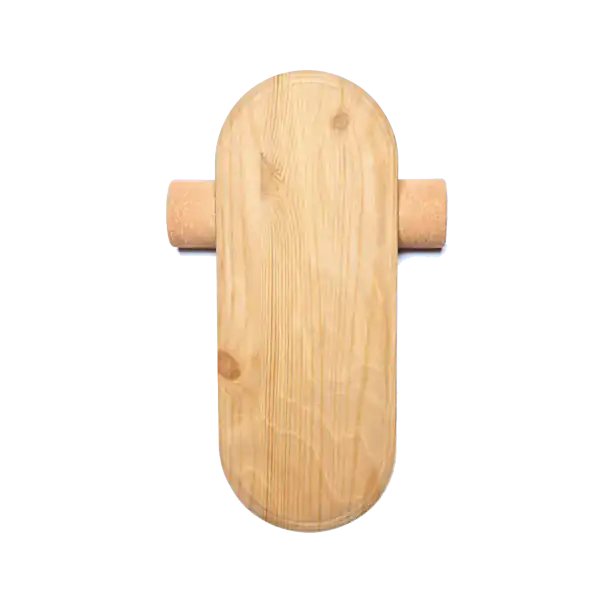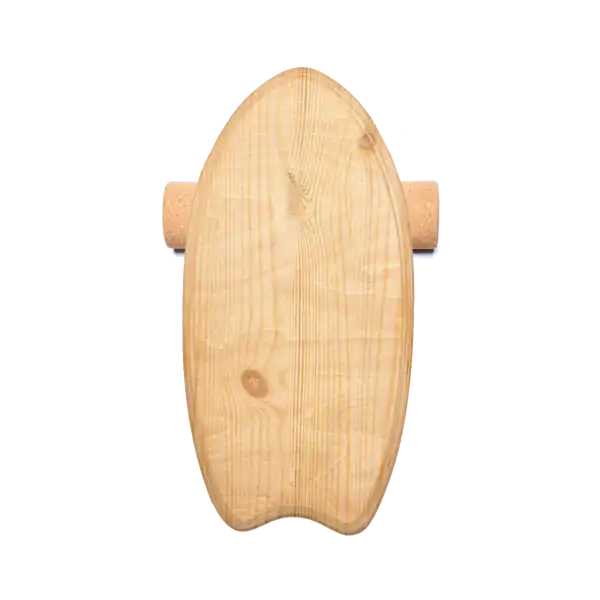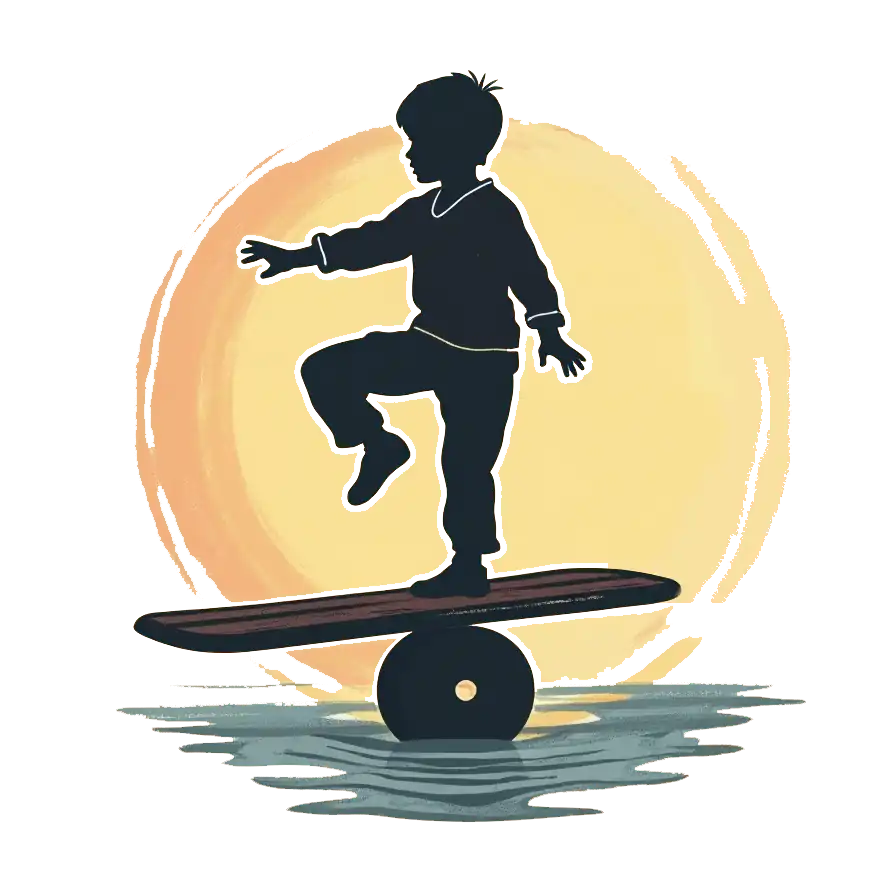Balance Board Buyer’s Guide: How to Choose the best balance board for you
In the quest for better fitness, balance, and stability, balance boards have emerged as versatile training tools that offer numerous benefits. Whether you’re an athlete looking to improve performance, someone recovering from an injury, or just seeking to enhance your core strength while working at a standing desk, the right balance board can make all the difference. But with so many options available, how do you choose the best balance board for your specific needs? This comprehensive guide will walk you through everything you need to know.
What Is a Balance Board?
A balance board is a fitness device designed to improve balance, coordination, and strength by creating an unstable surface that forces your body to constantly adjust and engage multiple muscle groups. These boards come in various shapes, designs, and difficulty levels, making them suitable for everyone from beginners to advanced athletes.
Types of Balance Boards
Understanding the different types of balance boards is crucial for choosing one that matches your skill level and fitness goals:
1. Wobble Boards
Characteristics: Features a flat surface with a central dome or hemisphere underneath, allowing 360-degree tilting motion.
Best for: Beginners, rehabilitation, general balance training
Benefits: Wobble boards provide multi-directional movement but with limited tilt (usually less than 20 degrees), making them excellent starter boards. They’re particularly effective for ankle strengthening and rehabilitation exercises.
2. Rocker Boards
Characteristics: A flat board with a curved base that allows movement in only two directions (either forward/backward or side-to-side).
Best for: Beginners, specific directional training
Benefits: Rocker boards offer more controlled movement, making them ideal for beginners focusing on specific planes of motion. They’re less challenging than wobble boards but still effective for improving balance.
3. Roller Boards
Characteristics: A board balanced on a cylindrical roller, allowing side-to-side movement.
Best for: Intermediate to advanced users, surf and snowboard training
Benefits: Roller boards provide a dynamic balance challenge that closely mimics board sports. The roller continuously moves, requiring constant adjustment and offering a more challenging workout.

The Classic Boarder Balance Board
Our flagship wooden balance board features a rounded deck crafted from pine with a clear grip finish. The Classic Boarder Balance Board provides the perfect balance of challenge and stability for all skill levels.
4. Sphere Boards
Characteristics: A board balanced on a spherical base that allows multi-directional movement.
Best for: Advanced users seeking maximum challenge
Benefits: Sphere boards are among the most challenging balance boards, offering unrestricted movement in all directions. They’re excellent for advanced balance training and sports-specific conditioning.
5. Inflatable/BOSU Boards
Characteristics: Half-dome inflatable surface that can be used with either the dome or flat side up.
Best for: Various fitness levels, versatile workouts
Benefits: These boards provide adjustable difficulty based on inflation level and offer versatility for different exercises. They’re excellent for combining balance training with strength exercises.
6. Springboard Balance Boards
Characteristics: Uses a spring base beneath the board.
Best for: Targeted lower body workouts
Benefits: Great for increasing the difficulty of exercises like squats and adding an element of instability to strength training.
7. Slackline Boards
Characteristics: Features a short webbing slackline that users balance on.
Best for: Advanced users looking for a unique balance challenge
Benefits: Excellent for developing precise balance control and mimicking the feel of slacklining.
Benefits of Using the best Balance Board
Balance boards offer numerous benefits that extend beyond simply improving balance:
Best Balance Board Physical Benefits:
- Reduced risk of injury: Regular balance training can help prevent ankle sprains and reduce falls, especially in older adults.
- Improved core strength: The constant adjustments required to maintain balance engage core muscles throughout your session.
- Enhanced joint stability: Balance boards help strengthen the stabilizing muscles around joints, particularly in the ankles, knees, and shoulders.
- Better proprioception: Balance training improves your awareness of body positioning, which translates to better movement control in daily activities and sports.
- Rehabilitation tool: Balance boards are commonly used in physical therapy to help recover from injuries, particularly ankle sprains.
Mental Benefits:
- Improved focus and concentration: Maintaining balance requires mental engagement and concentration.
- Enhanced cognitive function: Studies have shown that balance training can improve cognitive function in healthy adults.
Practical Benefits of the best balance board:
- Portability: Most balance boards are lightweight and portable, making them ideal for home use or taking to the gym.
- Versatility: Balance boards can be used for various exercises targeting different muscle groups.
- Active sitting/standing: Using a balance board at a standing desk helps you stay active during otherwise sedentary tasks.

Custom Balance Board
Want something uniquely yours? We can create a custom balance board tailored to your specifications. Choose your wood type, dimensions, design elements, and difficulty level.
Factors to Consider When Choosing the best Balance Board for your requirements
With so many options available, here are the key factors to consider when selecting the best balance board for your needs:
1. Skill Level
Your current balance abilities should be the primary consideration when choosing a balance board:
- Beginners: Start with wobble boards, rocker boards, or inflatable boards that offer more stability and limited tilt.
- Intermediate: Progress to more challenging options like roller boards with limited range of motion.
- Advanced: Consider roller boards, sphere boards, or slackline boards that offer maximum challenge and the potential to learn tricks.
2. Intended Use
Different balance boards excel at different applications:
- Rehabilitation: Wobble boards and inflatable boards are typically best for injury recovery.
- Sports training: Roller boards closely mimic the movements in board sports like surfing, skateboarding, and snowboarding.
- Standing desk: Look for balance boards specifically designed for standing desks, which typically offer moderate challenge and anti-fatigue benefits.
- Fitness/workouts: Inflatable boards like BOSU trainers offer versatility for incorporating balance into various exercises.
3. Size and Dimensions
The size of the balance board affects both usability and challenge level:
- Surface area: Larger surface areas provide more stability and are better suited for beginners or taller individuals.
- Board height: Higher boards create more tilt and greater challenge.
- Weight capacity: Ensure the board can safely support your weight with some margin for dynamic movements.
4. Material and Durability
Balance boards come in various materials, each with pros and cons:
- Wood/Bamboo: Typically more durable, environmentally friendly, and aesthetically pleasing. Bamboo is particularly strong while remaining lightweight.
- Plastic: Often more affordable and water-resistant but may be less durable than wooden options.
- Composite materials: Offer a balance of durability and weight.
5. Surface Texture of the best balance board
The board’s surface affects grip and safety:
- Anti-slip surface: Essential for preventing accidents, especially during intense workouts.
- Grip tape: Similar to skateboard grip tape, provides excellent traction but may wear over time.
- Textured surfaces: Offer good grip while typically being more durable than grip tape.
6. Adjustability
Some balance boards offer adjustable difficulty:
- Adjustable fulcrum height: Allows you to increase or decrease the challenge as your skills improve.
- Interchangeable bases: Some models come with different rollers or bases to vary difficulty.
- Inflation level: For inflatable balance trainers, the amount of air affects stability.
7. Additional Features
Consider these extra features that might enhance your experience:
- Resistance band attachments: Some boards include attachment points for resistance bands to increase workout intensity.
- Handles: Can provide additional support for beginners or enable more exercise variations.
- Included accessories: Some boards come with workout guides, extra rollers, or stoppers to limit movement.
8. Price
Balance boards range widely in price:
- Budget options: Basic wobble boards typically start around R900.00
- Mid-range: Most quality balance boards fall in the R1000.00 – R2000.00 range.
- Premium: Advanced or professional-grade balance boards can cost R2000.00 or more.
How to Use a Balance Board Safely
To get the most benefit while minimizing risk:
- Start on a soft surface like carpet or grass when first using your balance board.
- Have a stable object nearby (like a wall or chair) that you can hold onto when first starting.
- Begin with simple exercises like just standing on the board before attempting more complex movements.
- Wear appropriate footwear with good grip or go barefoot for better foot engagement.
- Maintain proper posture with knees slightly bent, core engaged, and eyes forward.
- Progress gradually as your balance improves rather than rushing to advanced exercises.
Effective Balance Board Exercises
Once you’ve selected your balance board, try these exercises to maximize its benefits:
Basic Exercises:
- Static balance: Simply standing on the board while maintaining balance.
- Weight shifts: Slowly shifting weight from side to side or front to back.
- Single-leg balance: Once comfortable, try balancing on one leg.
Intermediate Exercises:
- Squats: Perform shallow squats while maintaining balance.
- Lunges: With one foot on the board and one on the ground.
- Planks: Place hands or forearms on the board in plank position.
Advanced Exercises:
- Push-ups: With hands on the balance board.
- Single-leg squats: Combining the challenge of a single-leg exercise with balance.
- Dynamic movements: For roller boards, practice controlled side-to-side or circular movements.
Maintenance and Care
To ensure your balance board lasts:
- Keep it dry: Wooden boards especially should be kept away from moisture.
- Clean regularly: Wipe down the surface to maintain grip and hygiene.
- Check for damage: Regularly inspect for cracks or wear, especially on load-bearing components.
- Store properly: Keep out of direct sunlight and extreme temperatures.
Final decision on the best balance board for you
The best balance board for you depends on your fitness goals, experience level, and intended use. Beginners should start with more stable options like wobble boards or rocker boards, while advanced users may prefer the challenge of roller or sphere boards. Consider factors like size, material, and additional features to find the perfect match for your needs.
Regardless of which balance board you choose, consistent practice will improve your balance, strengthen your core, and enhance your overall fitness. Start slowly, focus on proper technique, and progressively challenge yourself as your skills develop.
By investing in a quality balance board that suits your specific requirements, you’ll have a versatile fitness tool that can provide years of beneficial training and help you achieve better balance, both literally and figuratively, in your fitness journey.
